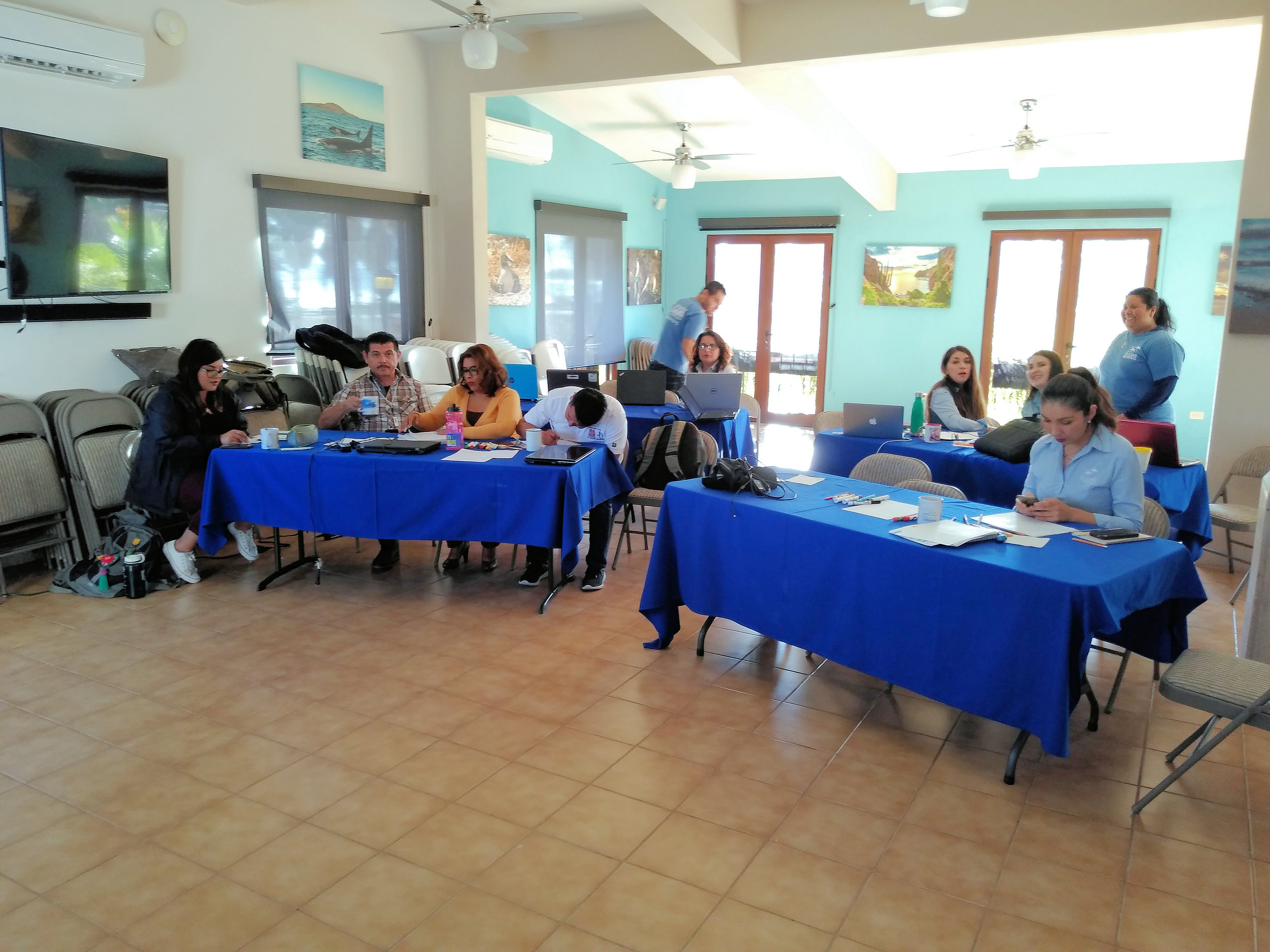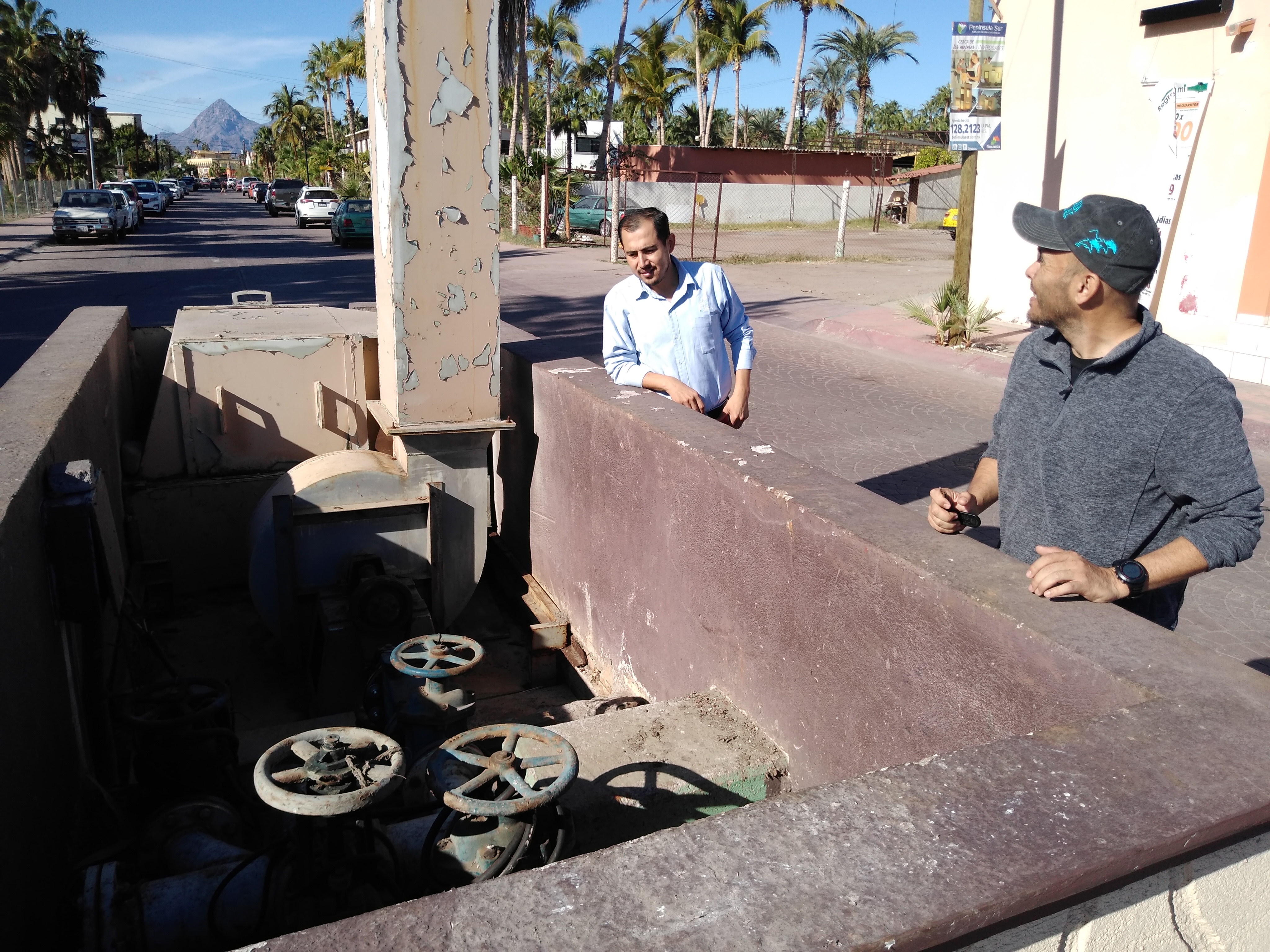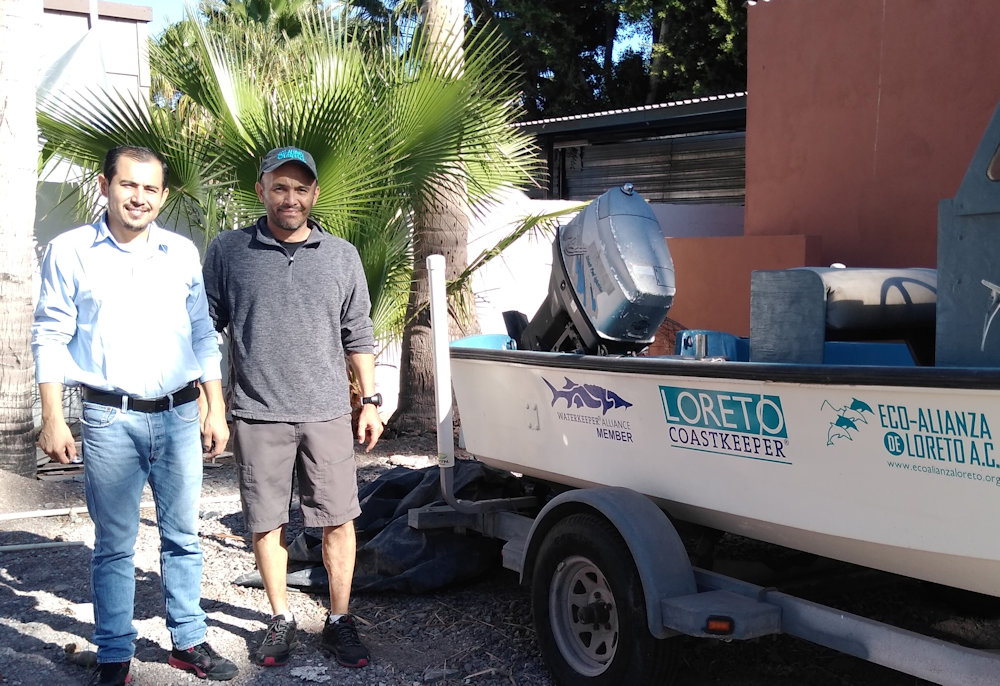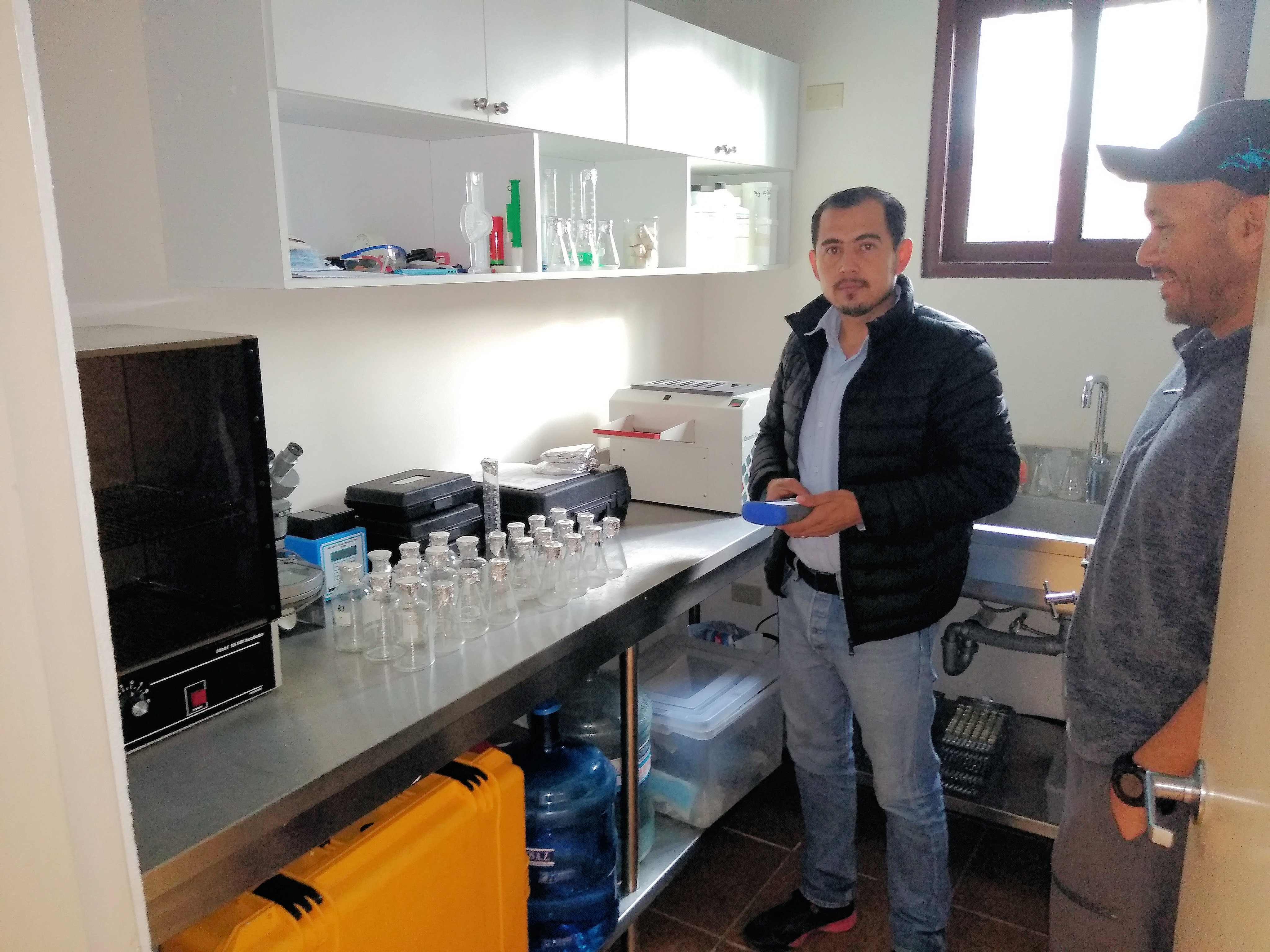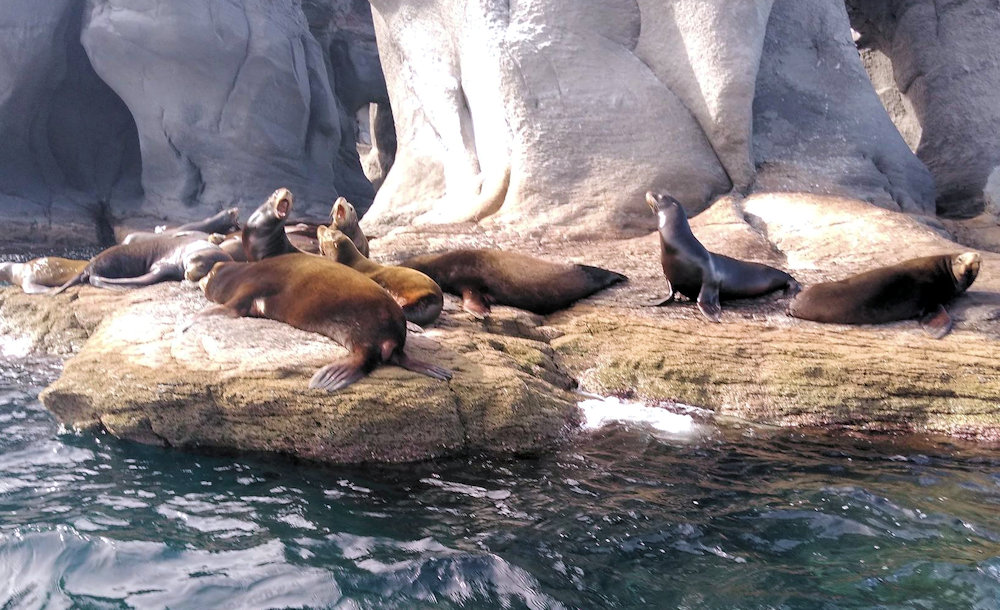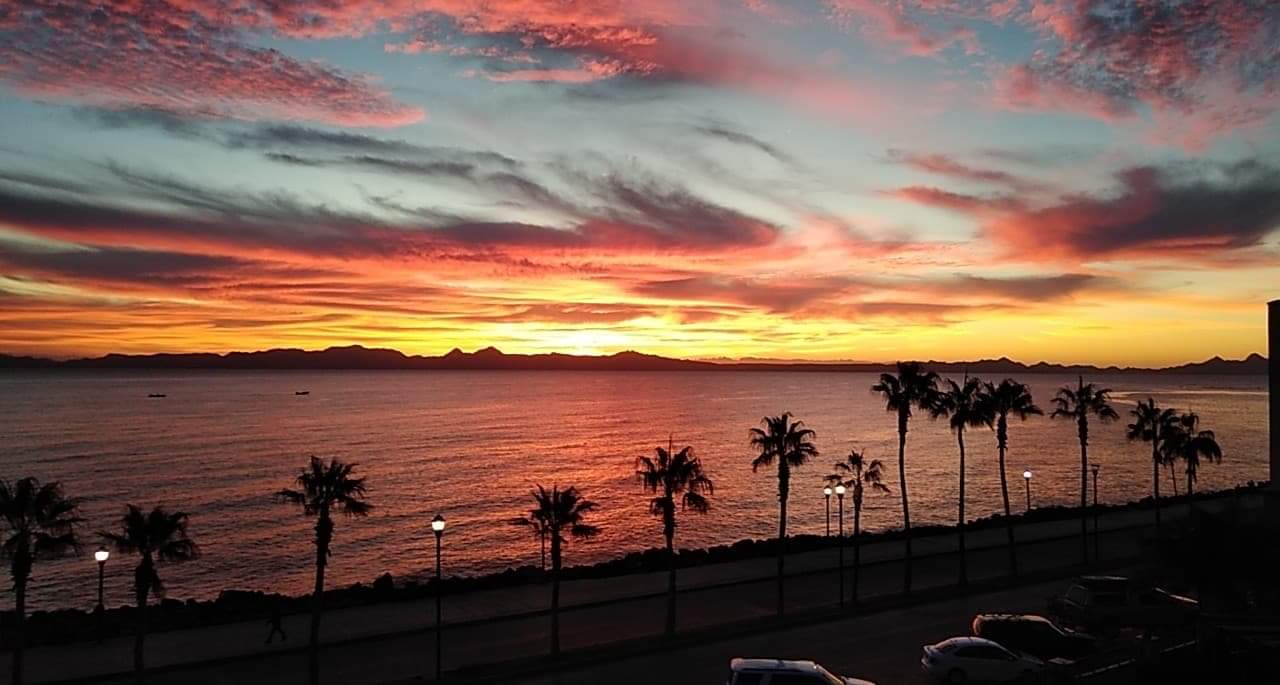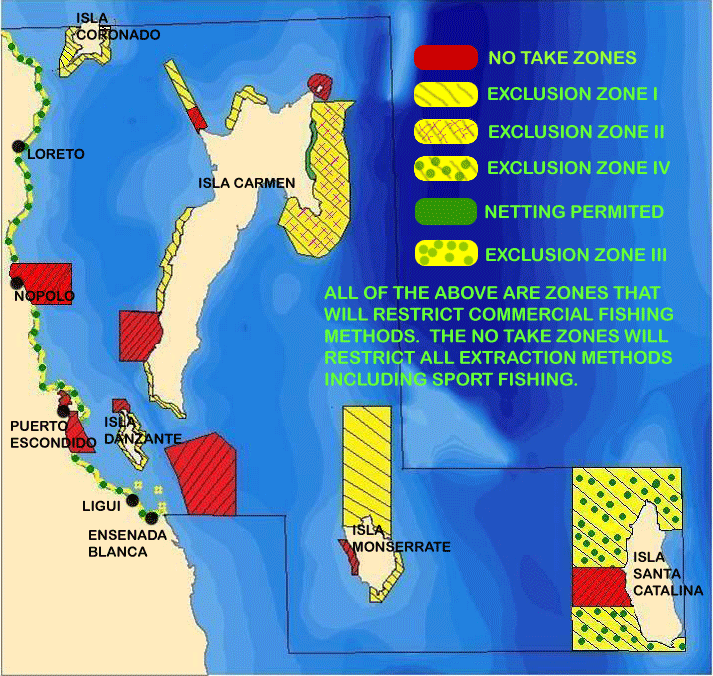
The good news is that Loreto Bay is getting healthier, thanks in part to the work of Loreto Coastkeeper, our Waterkeeper Alliance Organization in Loreto, Baja California Sur, Mexico.
In December of 2018, I had the opportunity to visit Loreto, Mexico, and visit with our Loreto Coastkeeper who is very actively engaged in the work to protect Loreto Bay National Park. Loreto Coastkeeper is part of a larger organization, “Eco-Alianza De Loreto, A.C.,” with several impactful programs throughout the Loreto region, including programs in stormwater management and water quality, land use and growth management, fishing regulation, solid waste and garbage management, education at their office and in the local school system, wastewater management, training other Baja Waterkeepers and regional environmental organizations, whale watching and tourist management, and water supply. Isla Coronado, above, is a popular spot for sea kayaking in the warm, crystalline water in Loreto Bay National Park and is in Loreto Coastkeeper’s watershed.
Loreto, Mexico, is about 1,000 kilometers south of Tijuana, and about 500 kilometers north of Cabo San Lucas on the Sea of Cortez. Loreto Bay National Park was created 22 years ago primarily to protect the Bay from over-fishing. Loreto Coastkeeper helps patrol the Bay and the islands in the Park, while the Park Service and the military focus on enforcing the fishing regulations. Although the patrol and enforcement work is underfunded and understaffed, larger fish are starting to reappear as well as smaller fish, both of which indicate that the ecosystem is beginning to recover from unregulated sport-fishing that plagued the area in the past.
Loreto Coastkeeper has a wonderful office in downtown Loreto, just two blocks from the Bay. During my visit, their upstairs educational center was being used to help support and educate staff at a sister organization, the biggest protected area in Mexico, Vizcaíno Biosphere Reserve. Coastkeeper’s headquarters sometimes serve as a Baja-hub for educating other environmental organizations, National Park staff, as well as the general public.
Let’s face it: Almost every Waterkeeper deals with one significant problem—“poop”—and Loreto Coastkeeper has an active program to try to address the problems of human wastewater pollution in the Bay. Along Loreto Bay in Mexico, right in downtown Loreto, these “pump stations” (above) work to pump all of the human sewage back uphill towards the Loreto wastewater treatment plant. While the pumping is mostly successful (except during big storm events), the smell emanating from the pump stations plagues the waterfront. The Loreto government has tried various air circulation systems to get rid of the occasional smell of effluvia along the Bay, but so far to no avail. Above, the Loreto Coastkeeper Hugo Maldonado (right) and Coastkeeper technician Alex Mendoza (left) inspect the air circulation system as we discuss the problem.
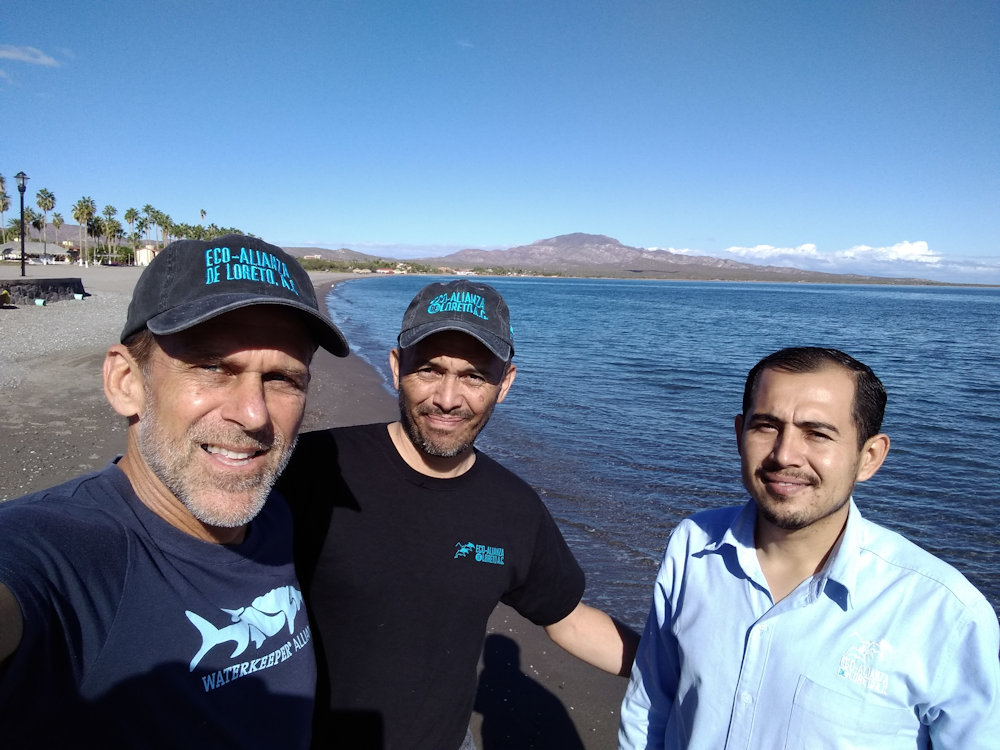
On our walking tour along the Loreto Malecon (waterfront park and promenade) and down to the marina, we discussed the renaissance that is occurring by the local community, and the tourists, for appreciating the scenic Bay and extraordinary beauty of its waters. Over the last decade, sport-fishing tourism has decreased while whale-watching and kayaking tourism has increased. Hugo and Alex are proud of Loreto Coastkeeper’s role in promoting the protection of the Bay, as well as in educating the local citizens and the tourists. Coastkeeper notifies the public when there’s a water pollution advisory at the beaches, participates in beach clean-ups, and has a “zero-waste” program that works to keep the beaches clean.
Coastkeeper’s panga (small boat) is used by the staff to patrol Loreto Bay, collect water samples, and assist local agencies in their enforcement activities. The marina is just a few blocks from the headquarters, which allows staff to be a constant presence in the local community of tourists and fisherman, as well as law enforcement.
Back in the office, Alex discusses Coastkeeper’s water quality testing lab, as well as the data collection system. Coastkeeper has an excellent monitoring and testing program that helps track location and timing of pollutants in several places along the coast, and then informs Park officials and local government about pollution problems.
The sea lion population is healthy and noisy at Coronado Island (see video link here). The Islands in Loreto Bay National Park are mostly in ecologically good shape, although the burgeoning tourist industry is having an impact. Protecting the islands is part of Coastkeeper’s work, including tracking and helping to control the impact of human waste disposal by boaters and sailboats. About ten times per year, cruise ships dock at Loreto Bay, Mexico which brings a boon to the local economy but also brings ecological impacts.
The sunrises on Loreto Bay are spectacular. This is a view from the mainland looking east across the Loreto Bay National Park to Isla Carmen. Loreto Bay and Loreto National Park are a wonderful piece of Baja California Sur, Mexico—Loreto Coastkeeper is doing excellent work implementing the Waterkeeper model to protect this special place.
********
Gary Wockner is the Poudre Waterkeeper in northern Colorado. In his spare time, he travels the world supporting Waterkeeper Organizations and Affiliates and highlighting their work.
